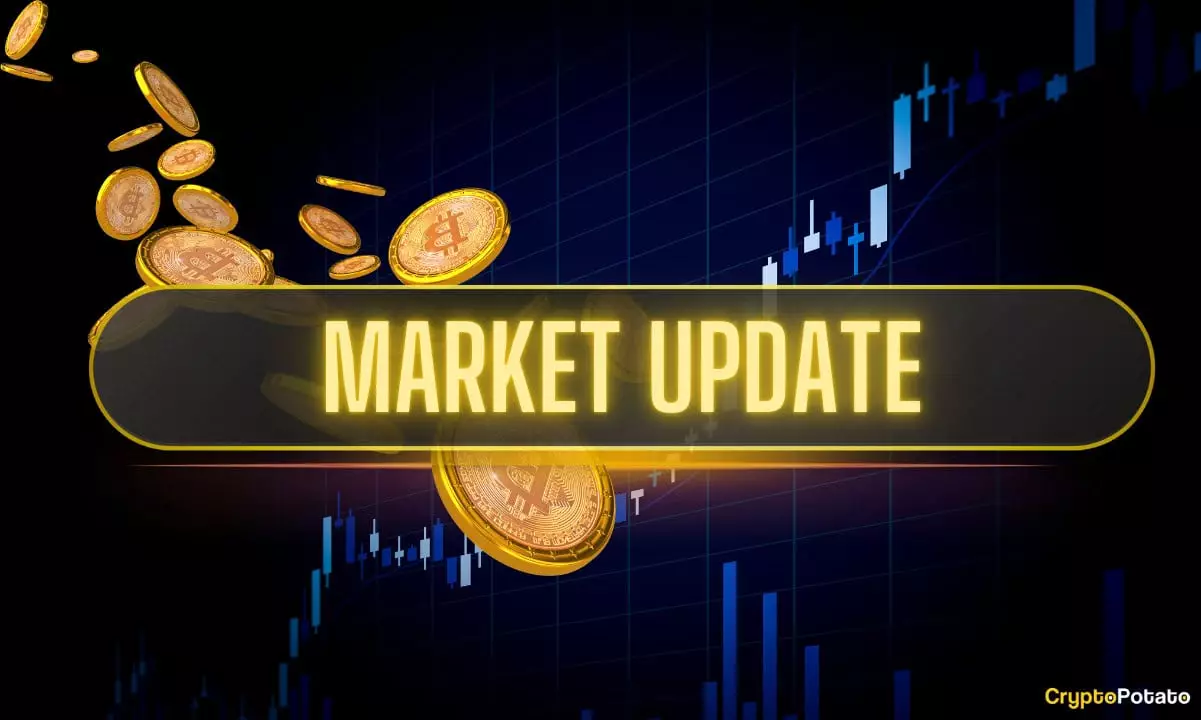In a world where cryptocurrencies are often seen as volatile and unpredictable, the recent events surrounding Bitcoin’s performance offer a striking showcase of its potential resilience. The backdrop of escalating tensions between Israel and Iran, coupled with a tumultuous geopolitical landscape, would typically signal a downturn for financial markets, including cryptocurrencies. Unexpectedly, Bitcoin managed to maintain a degree of stability amidst the chaos, with its price fluctuating yet stabilizing around the $104,000 mark after an initial dip. This response raises crucial questions: is Bitcoin truly emerging as a safe haven, or is it merely benefiting from transient circumstances?
The sudden military actions—Israel launching missiles into Iran—led to immediate market reactions, tearing at the fabric of investor confidence. The immediate plummet of Bitcoin from over $108,000 to under $103,000 highlights its sensitivity to global events. This reaction is a double-edged sword. On one hand, Bitcoin’s price is still swayed by external political activities, providing little reassurance for risk-averse investors looking for stability. On the other, the subsequent recovery and the ability to hover around the mid-$100K range illustrate a crucial turning point for the asset as institutional confidence appears to be solidifying.
Market Dynamics: The Role of Institutional Investors
While Bitcoin’s traditional appeal to the retail investor may seem diminished, on-chain data indicates that it now thrives largely due to institutional backing. The evident absence of smaller transaction volumes suggests that the small-scale retail investor is sitting on the sidelines. This reinforces fears that retail enthusiasm is waning amid relentless inflation and regulatory uncertainties. Meanwhile, institutional players seem to be taking center stage, driving Bitcoin’s price primarily through large transactions.
The correlation between Bitcoin’s stability and institutional investments invites a deeper reflection on its market identity. Is Bitcoin evolving beyond being just a speculative asset and moving closer to being a form of digital gold, a hedge against economic uncertainty, especially as over $100,000 seems to be consistently defended by major players? This transition, though positive in the short run, may also raise questions about the long-term decentralization and democratization of cryptocurrency. For ardent supporters of a free marketplace, this dynamic feels disheartening.
The Impact of Regulatory Changes on the Crypto Landscape
Recent legislative motions, such as the passage of the GENIUS Act in the U.S. Senate, signal a shift in how cryptocurrencies, particularly stablecoins, are viewed and regulated. While this could establish a clearer operational framework for the crypto landscape within the United States, it also brings an air of unease. The regulatory embrace, led by a bipartisan initiative, juxtaposed with increasing calls for transparency, can simultaneously bolster the market while creating new compliance pressures for smaller players.
Investors are left pondering whether this strengthened regulatory framework will foster innovation or stifle it. There’s a palpable concern that too strict regulations could inadvertently push fledgling projects offshore, eroding the pioneering spirit that has characterized the cryptocurrency ecosystem. It remains to be seen how the House, commanded by Republicans, will respond to this regulatory shift. It might be more prudent for legislative bodies to strike a balance—one that could support stablecoin innovation while ensuring broader consumer protections.
Altcoins’ Varied Performance: A Cautionary Tale
The mixed performance of altcoins during such tumult underscore that Bitcoin is not facing its tribulations alone. Some, like WBT, have soared, achieving impressive growth rates in contrast to others like ADA and SUI spiraling downward. This divergence serves as a reminder of the unpredictable nature of the altcoin ecosystem, which often mirrors Bitcoin but can stray drastically in terms of performance.
Investors must be wary of the potential bubbles forming within the altcoin market, particularly in such a charged environment. With bitcoin holding its ground, the allure of everyday traders may grow in seeking alternative investments, but they must tread cautiously. Historical patterns suggest that such casino-like behavior often leads to ruin more than wealth and emphasizes the need for strategic, informed investment decisions rather than mere trend chasing.
The Intriguing Case of Ancient Bitcoin Supplies
Amidst these discussions, the mention of an “ancient supply” of Bitcoin—the portion of the total supply that has been dormant for years—raises eyebrows. With reports indicating that daily BTC supply is diminishing, there is a sense of urgency that those with holdings in dormant accounts may need to consider their re-entry strategies. The apparent drying up of available Bitcoin could play a pivotal role in price dynamics, particularly if demand continues to rise against a backdrop of limited supply.
This situation reinforces a fundamental truth: as Bitcoin matures, its scarcity becomes increasingly influential in price-setting mechanisms. For astute investors, this prompts a reevaluation of existing portfolios and strategic asset management tailored for a future where Bitcoin may take on revered status within the broader financial ecosystem. While the machinations of the market remain in constant flux, understanding these dynamics could be the key to future profitability and sustainability in the cryptocurrency space.

